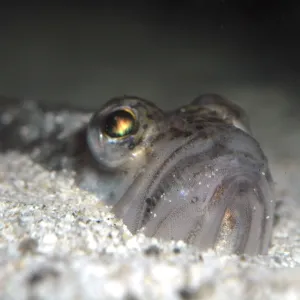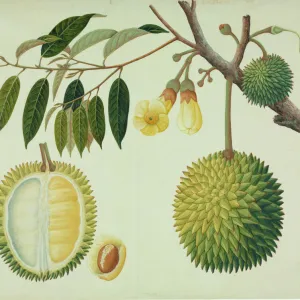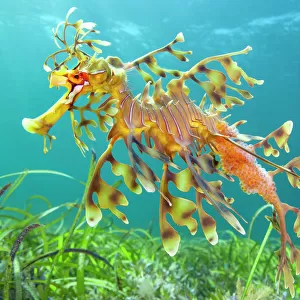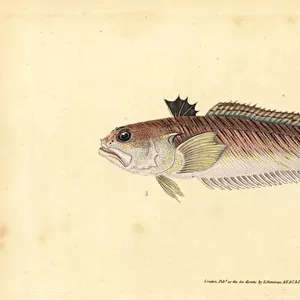Home > Animals > Fishes > W > Weever
Echiichthys vipera, lesser weever fish
![]()

Wall Art and Photo Gifts from Mary Evans Picture Library
Echiichthys vipera, lesser weever fish
Photograph of the lesser weever fish (Echiichthys vipera), which lives in the English Channel, buried under the sea bed with its venomous dorsal fin showing above the sandy bottom
Mary Evans Picture Library makes available wonderful images created for people to enjoy over the centuries
Media ID 8612242
© Mary Evans Picture Library 2015 - https://copyrighthub.org/s0/hub1/creation/maryevans/MaryEvansPictureID/10711719
Actinopterygii Bony Fish Dorsal Fishes Osteichthyes Perciform Perciformes Poisonous Ray Finned Fish Seabed Spine Stripe Tail Triangular
FEATURES IN THESE COLLECTIONS
> Animals
> Fishes
> W
> Weever
> Mary Evans Prints Online
> Natural History Museum
EDITORS COMMENTS
1. Title: "The Hidden Venom: A Portrait of the Lesser Weever Fish (Echiichthys vipera)" 2. Description: This image showcases the lesser weever fish (Echiichthys vipera), a small, venomous marine creature that resides in the sandy depths of the English Channel. The fish is expertly camouflaged among the seabed, with only its triangular, venomous dorsal fin protruding above the sand. The fin, adorned with distinctive brown stripes, is a warning sign to potential predators of the fish's potent poison. 3. Background: The lesser weever is a member of the Trachinidae family, also known as weever or stonefish, which are characterized by their venomous spines. This bony fish belongs to the ray-finned fish, perciformes, and osteichthyes classes, making it a part of the diverse Actinopterygii group. 4. Adaptations: The lesser weever's venomous dorsal fin is a crucial adaptation that helps protect it from predators. The fin contains a powerful neurotoxin that can cause intense pain and paralysis in predators, giving the fish a chance to escape. The fish's brown coloration and stripes provide excellent camouflage, allowing it to blend seamlessly into its sandy environment and ambush unsuspecting prey. 5. Habitat and Behavior: The lesser weever is typically found in shallow, sandy or muddy areas of the English Channel and other European waters. It is an ambush predator, lying in wait on the seabed and using its camouflage to blend in with its surroundings. During the daytime, the lesser weever buries itself in the sand, only emerging at night to hunt for small crustaceans, mollusks, and other invertebrates. 6. Conservation: The lesser weever is not considered a threatened species, but it is important to handle these fish with care due to their venomous spines. Accidental encounters with humans can result in painful stings, so it is best to leave these fascinating creatures undisturbed in their natural habitat.
MADE IN THE USA
Safe Shipping with 30 Day Money Back Guarantee
FREE PERSONALISATION*
We are proud to offer a range of customisation features including Personalised Captions, Color Filters and Picture Zoom Tools
SECURE PAYMENTS
We happily accept a wide range of payment options so you can pay for the things you need in the way that is most convenient for you
* Options may vary by product and licensing agreement. Zoomed Pictures can be adjusted in the Cart.







